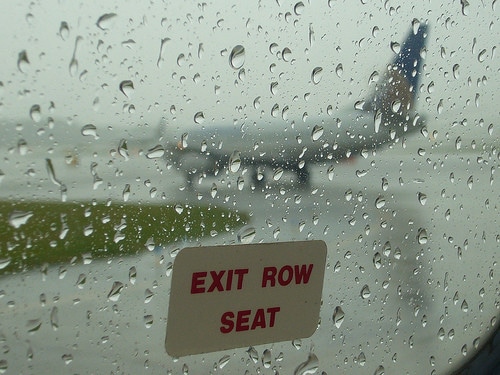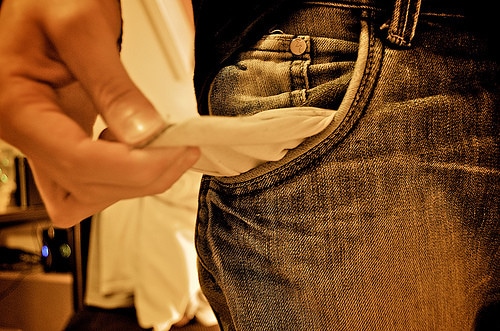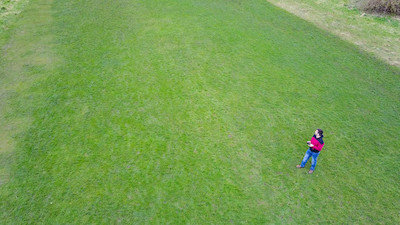 The tragic crash of Air France Flight 447 and apparent death of all aboard may have you feeling apprehensive and somewhat disappointed in air travel. Despite what the media portrays, 76.6% of people survive serious plane crashes and there are some simple ways you can increase your chances of survival if you are ever in one.
The tragic crash of Air France Flight 447 and apparent death of all aboard may have you feeling apprehensive and somewhat disappointed in air travel. Despite what the media portrays, 76.6% of people survive serious plane crashes and there are some simple ways you can increase your chances of survival if you are ever in one.
There isn’t much you can do if you’re on a jumbo jet that completely fails and you plummet to the ground from a high altitude like Flight 447. Luckily for us this isn’t how most crashes happen and expert research from air tragedies can teach us a lot about how to make it out of a disaster.
The 5 Row Rule
According to Ben Sherman, the author of The Survivors Guide: The Secrets and Science That Could Save Your Life, research shows that passengers usually move an average of 5 rows before they can get off a burning aircraft. Sitting any further away than 5 rows from any exit row greatly reduces your chances of surviving. You can also slightly improve your chances by sitting at the back of the plane.
Be Alert When Crashes Are Likeliest To Happen
Plane crash from statistics PlaneCrashInfo.com show that 68% of plane crashes occur with in 30 minutes of takeoff and 30 minutes of landing. In fact, 79% of all crashes happen when the plane isn’t cruising. Ben Sherman suggests that those are the times when most of us are buried in our books, deafened by iPods, and ignoring the safety directions. (Reading them, by the way increases your chance of survival too, even for frequent fliers.)
Keep Your Seat Belt On
Sudden losses of altitude and turbulence are rare but more common than plane crashes. A steep drop in altitude due to a strong downdraft, or computer error as happened on Qantas flight in 2008 can cause serious injuries. If you do survive the initial impact you don’t want to be hindered by a broken leg or head laceration because you were tossed about the cabin on the way down. A mere 20 second steep dive on that Qantas flight caused a number of serious injuries and while there was no crash, the injuries could have prevented those passengers from evacuating.
Dress For Success
Avoid wearing highly flammable clothing like nylon stockings and footwear that’s difficult to run in like flip-flops. Comfort is important but take a moment to think about how practical your clothing is before you head to the airport. It’s also a good idea to keep your shoes on during the critical times of takeoff and landing.
Put The Most Important Things In Your Pocket
Experts say that the single biggest factor to slow down an airplane evacuation are people trying to grab things out of their carry-on luggage. Anything that is sentimentally important or valuable enough to you that you’d risk your life to save should be in your pockets. If it can’t fit forget it. You can always by a new one and I’m sure your wife will forgive you for leaving behind that pen she gave you. Your loved ones would rather have you.
 500 Feet (150 Meters)
500 Feet (150 Meters)
Get at least 500 feet away from the aircraft’s wreckage to avoid explosions and fire from the plane but don’t get so far away that you’ll get lost or can’t be found. (Both are easy to do in a tense situation.) For water landings, get as far from the wreckage as possible to avoid strong waves and getting pulled under as the craft sinks.
Some More Survival Tips
- Stay Sober – Even though drinking is one of 3 fun things to do if your flight gets canceled being drunk won’t help you in any disaster, aerial or not. Getting drunk right before your flight is the worst time to be inebriated.
- Relieve Your Anxiety Without Relying On The Statistics – The further you are from being calm and assertive the less clearly you’ll be able to think and do the best things to survive. Relax while on any flight because your odds of being in a crash are extraordinarily small. Stress and blood clots from flying are more likely to kill you.
Be Prepare But Not Scared
Your chances of being involved in a plane crash are very, very small. While these precautions are sound advice, don’t preoccupy yourself by worrying too much about them. Use common sense and be aware when it counts, get a seat close to the exit, dress practically, and enjoy your flight.
[photos by: eperales, Ti.mo, Peter Gerdes]




![12 Things To Know Before Flying A Drone So You Don't Crash It [VIDEO] 12 Things To Know Before Flying A Drone So You Don't Crash It [VIDEO]](https://foxnomad.com/wp-content/plugins/contextual-related-posts/default.png)








Good post Anil!
Thanks!
I’m from the mountains and always sat at the back of the plane. The reason is that I never heard of a plane backing into a mountain before or since.
I literally laughed out loud when I read that. I think the scariest place I’ve ever sat on a plane was row 1 of a 747. Takeoff felt like a roller coaster ride.
Years ago I like sitting in the bubble of the 747. The front part of it was first class so I would get a crack at the extra meals and booze. I also felt that if we ditched that part of the plane would be the last above water.
(Kind of graveyard humour isn’t it?)
Graveyard humor for sure – but going down in a ball of flames is always in the back of my mind when I’m on a plane. I even thought about it when I went skydiving, and I had a parachute on!
Great advice!
Whenever I’m flying I prefer to sit as close to the exit as possible. Not wearing heels or flip-flops is also a big advantage!
Shoes are important, even after you get off the plane. It’s easy to stub or spill stuff on your feet in flip flops and in some parts of the world I couldn’t imagine not having the protection of shoes.
I always make it a point to notice where the exits are and also the people sitting directly in front of them. I’m not sure if there is any science behind it but I’m going for the exit with the person most likely to get that door open!
Thouhg the odds of an aircrash are thankfully very small, these are some nice reminders. I have always, as a habit, counted the number of seats between me and the nearest exit and noted whether it is in front or behind me. And I do like to have a seatbelt on. I think the seatbelt is important as that can prevent quite a few issues during turbulence like you say.
I always have my seat belt on, it’s certainly overlooked by many passengers who usually only clip them on for takeoff and landing.
Would love the same information for a bus. I have no idea where to sit but I’ve moved away from the front to avoid head on collisions.
Will definitely keep my eye out for it and let you know if I come across anything. As for buses, I always buckle up if possible – no matter how nerdy it makes me look!